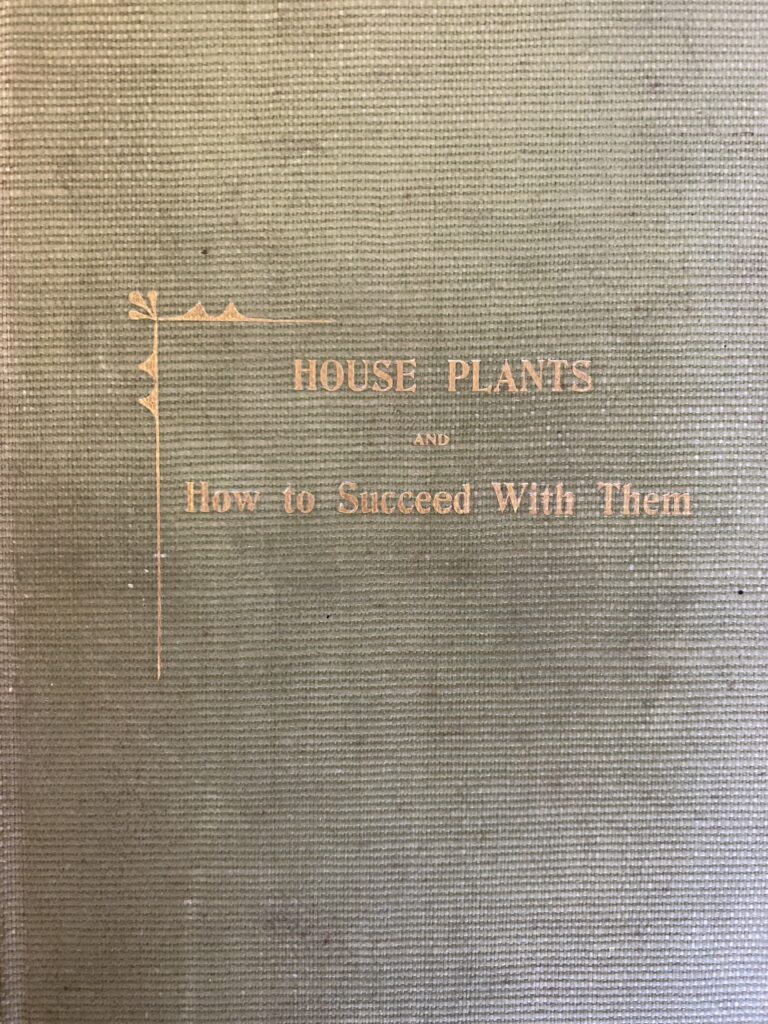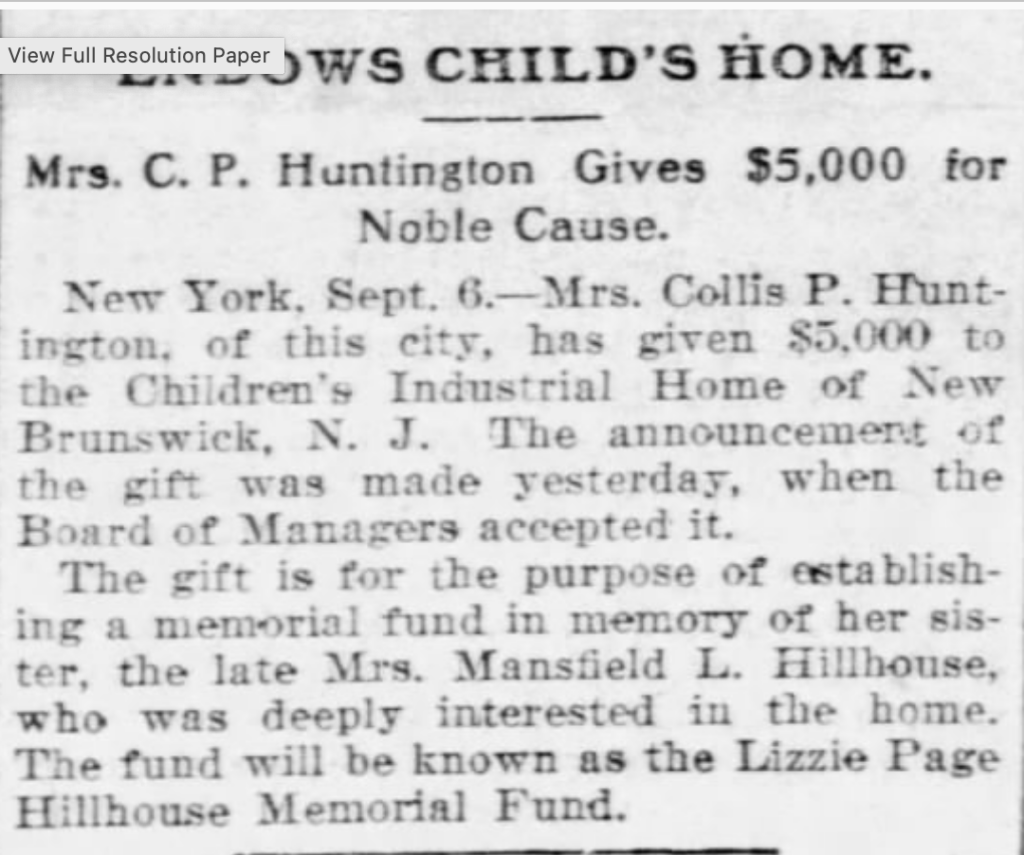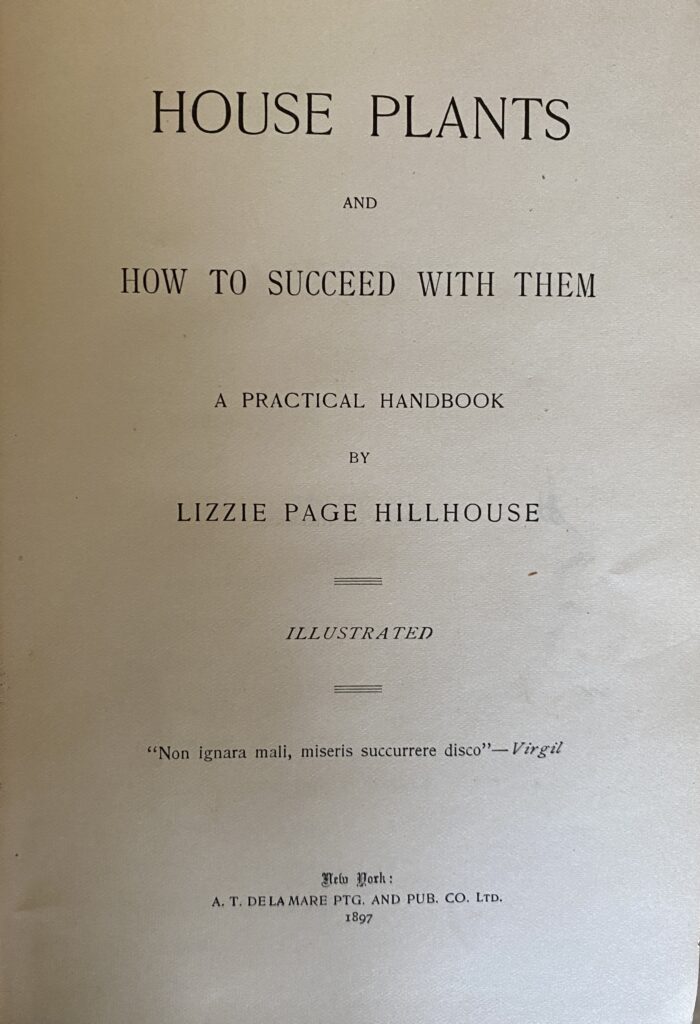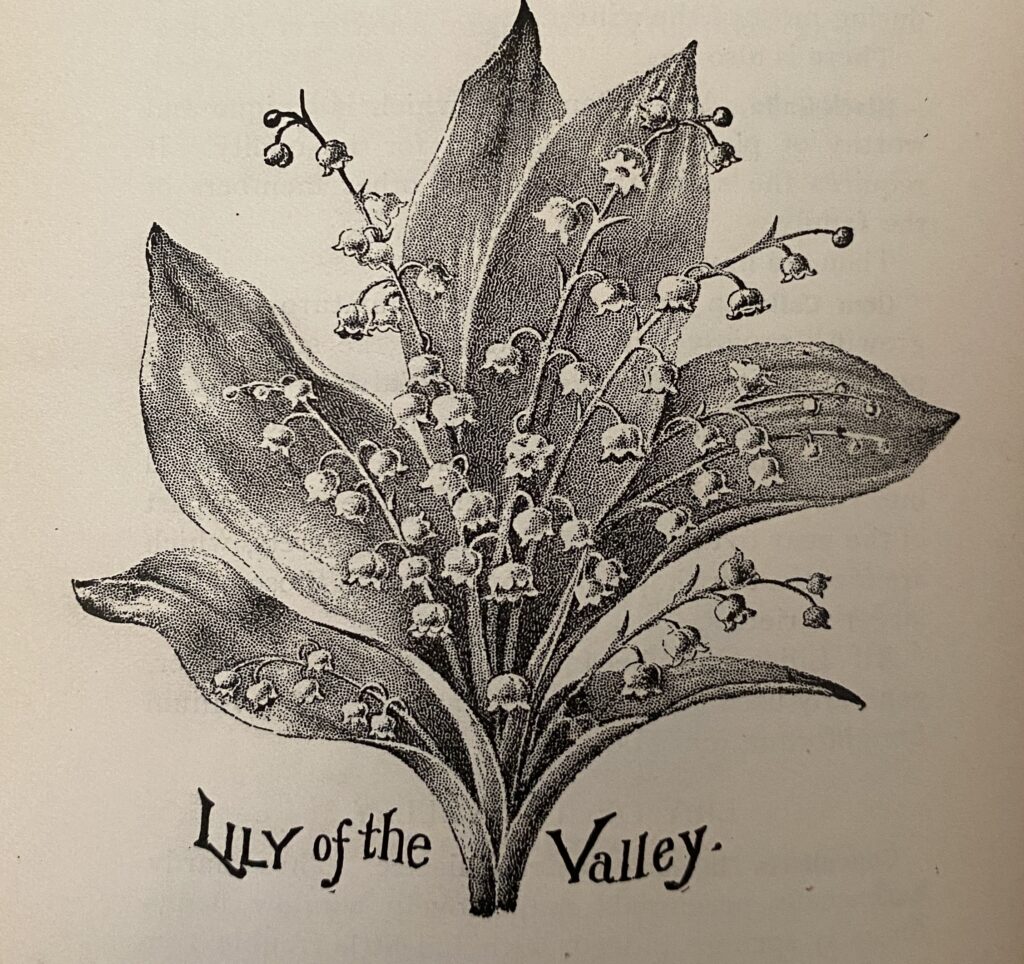
I recently received a box of old gardening books that someone offered me, knowing that I’ve often claimed my library is a sanctuary for old gardening books.
The last book I pulled out of the box was House Plants and How to Succeed With Them by Lizzie Page Hillhouse (A.T. de la Mare Ptg. and Pub. Col. Ltd., 1897).
There I stood between two rabbit holes—how did they tend house plants 125 years ago and who is Lizzie Page Hillhouse?
Lizzie is another Lost Lady of Garden Writing.
Like several of the other lost ladies, there isn’t much information available about her, but through searches on ancestry.com and newspapers.com, I found a few pieces of information. I’m going to put them here so if anyone else goes down the rabbit hole looking for Lizzie, at least they’ll find this blog post.
Note, I quickly learned in my searches that Lizzie was a common name in the 1800s and Page was also not that unusual as a last name. I admit I took off in the wrong direction a couple of times because of that. Who knew there were so many others? So keep that in mind as you read what I’ve come up with and if you know something different, let me know.
Lizzie appears to have lived most of her life in New Brunswick, New Jersey. What’s in New Brunswick? Rutgers University. But my brief search leads me to believe that Lizzie was never a student there.
According to the 1870 census, Lizzie was 15 years old that year, so she was probably born in 1855. But, in the 1900 census, Lizzie, who was by then married to Mansfield L. Hillhouse, a lawyer, was listed as being born in 1860, in Texas of all places. Was that because Mansfield’s birth year recorded in the 1900 census was 1858? Perhaps Lizzie didn’t want to be older than her husband?
(Yes, even though there are several other women named Lizzie Page, I’m pretty sure I found the right one even with the birth year discrepancy.)
What set me straight was I found a copy of Lizzie’s will which was put into probate in 1902, so I presume that’s the year she died. She was either 42 or 47 at the time of her death. I can find no other records about her dated later than 1902.
Most of the newspaper mentions I found were about her book, House Plants and How to Succeed With Them which usually sold for one dollar, which is $36 in today’s dollars. But I did discover via one newspaper article that her sister gave $5,000 to the Children’s Industrial Home of New Brunswick, NJ in September 1902 in memory of her sister.

It was known as the Lizzie Page Hillhouse Memorial Fund, but I found nothing more about the fund and didn’t try to find out more about the Children’s Industrial Home of New Brunswick, though I did find some images of postcards showing it as large, stately building.
I am curious why Lizzie was “deeply interested in the home,” and what kind of home it was—it doesn’t sound like a nice place to me— but not curious enough to spend time researching it.
But I was curious about what amount Mrs. Collis P. Huntington would have to donate today to make a similar donation. The answer? An astounding $172,562.79.
On to the book!
The title page of the book includes a phrase in Latin.

Non ignara mali miseris succurrere disco ~ Virgil Translated it is, “No stranger to misfortune myself, I have learned to relieve the sufferings of others.”
I suspect no other house plant book offers that quote on the title page. Does it refer to Lizzie suffering from misfortunes of some kind? Or does it refer to the many house plants she killed as she figured out how to keep them growing, and now she was passing on her knowledge to others?
Though I’ve not yet read the entire book—it takes a bit of concentration to read a book written in 1897—I’ve looked through enough of it to find out that Lizzie loved plants and loved to overwinter many plants, which she did by bringing them into her house during cold weather.
Other times, she carefully overwintered the plants or bulbs in a sheltered spot until she could bring them inside where they’d grow and flower in the warmth and light.
She included instructions for how to force Lily of the Valley into bloom in the wintertime, something I’ve done a few times myself.

House Plants and How to Succeed With Them is illustrated with one photograph (of tulips in a vase) and several black & white drawings such as this one of lily of the valley.
If you’d like to read it without buying an original copy or a reprint, you can do so online at Google Books.
And congratulations to Lizzie because I think her book had a second edition or print run in 1899.
Regardless of whether or not she lied about her age and even though she probably wrote just this one book, Lizzie is a welcome addition to the Lost Ladies of Garden Writing, with her book, House Plants and How to Succeed With Them.


You have me hooked, Carol! When I read this posting, I went back and binge-read the posts about the other five lost ladies. I don’t have a favorite, but found Buckie’s links to the monarchy very interesting (you knew I would.) And I love Dorothy Giles’s recipe for seeing fairies. Maybe I’ll try it! I can’t wait to see more biographies. Your ‘lost ladies’ published book is a must! P.x
Please consider scanning the entire book and uploading it to Project Gutenberg so the rest of the world can enjoy it as well!
It is already on the Internet Archive, since 2010.